
Kirsten McCarthy / Cats.com
Prescription cat food for hyperthyroidism features deliberately low levels of iodine to help reduce the production of excess thyroid hormone. While dietary therapy won’t cure hyperthyroidism in cats, it may help your cat maintain or regain muscle mass and support their recovery with proper treatment.
Because it’s specifically formulated for low levels of iodine, many veterinarians recommend Hill’s Prescription Diet y/d Thyroid Care cat food. This food is formulated to contain 0.1 ppm of iodine (measured as dry matter) and is clinically proven to decrease thyroid hormone production.
Hill’s also offers a dry cat food version of the formula, but feeding your cat a moisture-deprived diet may contribute to other health problems. As an alternative, we’ve assembled a list of species-appropriate wet cat foods with lower-than-average iodine levels.
NOTE: The foods on this list are non-prescription products that are not specifically formulated for the dietary management of hyperthyroidism. Your veterinarian is the best person to recommend treatment options for hyperthyroidism in cats.
At A Glance: Best Cat Food For Hyperthyroidism To Buy




Want a quick look at the products reviewed in this article? In the comparison table below, we’ve highlighted some of the most important features of each product. You’ll find more detailed information about each product later in the article.

Hill’s Prescription Diet y/d Thyroid Care with Chicken Wet Cat Food
- Formulated to reduce thyroid hormone production
- Relies primarily on animal protein and fat
- Rich in moisture to support your cat’s hydration

Hill's Prescription Diet y/d Thyroid Care Dry Cat Food
- Supports overall health in addition to reducing T4 hormone
- Pet parents may see results as soon as three weeks
- Provides support for the immune system and lean muscles

Vital Essentials Freeze-Dried Raw Pork Mini Nibs Entree Cat Food
- Made with a single source of animal protein
- Herring oil provides plenty of animal-sourced omega 3s
- Very low carbohydrate content

Smalls Ground Other Bird Fresh Cat Food
- Made with a single source of animal protein
- High in protein with low carbohydrate content
- Rich source of hydrating moisture
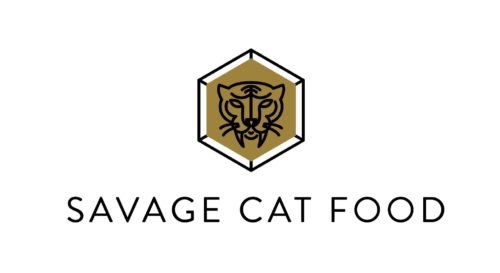
Savage Cat Food Rabbit & Lamb Frozen Cat Food
- Species-appropriate blend of muscle meat, organs, and bone
- Rich in moisture to support your cat’s hydration
- Very low carbohydrate content, under 10%

RAWZ 96% Chicken & Chicken Liver Pate Cat Food
- Features a blend of chicken muscle meat and chicken liver
- Highly digestible, short list of ingredients
- Rich in hydrating moisture for your cat

Wellness CORE+ Immune Health Chicken & Turkey Natural Grain-Free Pate Wet Cat Food
- Made with two high-quality animal protein sources: chicken and turkey
- Packed with immune-supporting nutrients like vitamin E, zinc, and prebiotics
- High in protein and calorie-dense to support healthy weight gain
Why Trust Cats.com
Our recommendations result from many hours of research by multiple team members, including our panel of veterinary advisors. In addition to researching the subject of dietary management for hyperthyroidism in cats, we evaluated dozens of prescription and non-prescription products, comparing their iodine content to the AAFCO minimum recommendation of 0.60mg/kg (measured as dry matter).
Along with one popular prescription thyroid care product, we included biologically appropriate cat foods that test under 3.0mg/kg of iodine, measured as dry matter. All foods were purchased at full retail price and tested in-house by members of our team with their own cats.
Our testing process involves detailed brand research, in-depth analysis of the product’s nutritional information, and evaluation of the product’s appearance, aroma, texture, consistency, and packaging. We rely on our cats’ responses to the food to gauge its flavor and general appeal.
How We Made Our Selections
We spent hours researching the subject of dietary management for hyperthyroidism and evaluating both prescription and non-prescription cat foods.
Using the requirements listed above, we gathered nutritional information for products from over twenty of our highest-rated brands. When typical nutrient analyses weren’t readily available, we contacted the brands directly. Some were more forthcoming than others.
Using dry matter values, we narrowed our list down to seven products with the lowest iodine levels. We eliminated fish-based foods and foods that contain seaweed-based ingredients like kelp, dulse, and agar-agar.
NOTE: The foods on our list are not formulated for thyroid care, so they are much higher in iodine than a prescription diet would be. We selected foods that tested as close to 0.60mg/kg iodine (measured as dry matter) as possible — the AAFCO minimum recommendation. The foods on this list tested under 3.0mg/kg, measured as dry matter.
The Top 7 Best Cat Foods For Hyperthyroidism
Best Cat Food For Hyperthyroidism: Comparison Table
| Product Name | Hill’s Prescription Diet y/d Thyroid Care with Chicken Wet Cat Food | Hill’s Prescription Diet y/d Thyroid Care Dry Cat Food | Vital Essentials Freeze-Dried Raw Pork Mini Nibs Entree Cat Food | Smalls Ground Other Bird Fresh Cat Food | Savage Cat Food Rabbit & Lamb Frozen Cat Food | RAWZ 96% Chicken & Chicken Liver Pate Cat Food | Wellness CORE+ Immune Health Chicken & Turkey Natural Grain-Free Pate Wet Cat Food |
| Primary Protein | Chicken | Chicken | Pork | Turkey | Rabbit | Chicken | Chicken, Turkey |
| Guaranteed Protein (Dry Matter) | 31.82% | 35.40% | 48.90% | 52% | 53.30% | 50% | 47.93% |
| Iodine (Dry Matter) | 0.1 ppm | 0.2 ppm | 0.9 mg/kg | 5.4 mg/kg | 0.33 mg/kg | 2.23 mg/kg | 2.4 mg/kg |
| Ash | N/A | N/A | N/A | 2.29 | 3 | 2.13 | 3 |
| Calcium | N/A | 0.85 | 1.79 | 0.49 | 1 | 0.48 | 0.38 |
| Phosphorus | N/A | 0.45 | 1 | 0.37 | 0.75 | 0.36 | 0.39 |
| Calories Per Ounce | 35 | 117 | 135 | 40 | 43 | 102 | 30 |
| Cost Per Ounce | $0.63 per oz | $9.41 per lb | $1.96 per oz | $0.80 per oz. | $1.25 per oz | $0.72 per oz | $5.66 per day |
What To Look For in the Best Cat Food for Hyperthyroidism?
Hyperthyroid Cats Need Highly-Digestible Protein.
Hyperthyroid cats have two things working against them when it comes to maintaining muscle mass. First, they have an overactive metabolism. Secondly, most of them are seniors.
New research suggests that seniors have high protein and energy needs—similar to the needs of kittens. When these needs aren’t met, they lose muscle.
Choose foods with over 50% of calories from protein. The best protein sources are species-appropriate and highly digestible. As an obligate carnivore, your cat requires meat-based food with no high-protein fillers like pea protein, potato protein, wheat gluten, and corn gluten meal.
Choose a Diet That’s Less Than 10% Carbohydrate on a Dry Matter Basis.
Hyperthyroidism raises your cat’s blood glucose levels and often leads to insulin resistance and impaired glucose tolerance. This is a prediabetic state. Even if this doesn’t advance to full diabetes mellitus, hyperthyroid cats are sensitive to sugar and require controlled levels of dietary carbohydrates.
What To Avoid When Feeding a Hyperthyroid Cat?
Avoid Fish-Based Foods.
A study in 2000 found that cats who preferred canned cat food in fish or liver and giblets flavors had an increased risk of hyperthyroidism. Fish and other ocean creatures have higher levels of iodine than are found in other foods. Since iodine is central to thyroid function, this may be part of the connection, but it’s not clear that iodine content is the only problem. Talk with your veterinarian if you are concerned that your cat’s canned food diet is increasing the risk of hyperthyroidism.
Most Fish Is Contaminated With Toxins, Including PBDEs
These fire-retardant chemicals were extremely popular in the late 1970s and were used to treat everything from pajamas to curtains. Because they’re known endocrine disruptors, PBDEs were essentially phased out in the United States and European Union during the early 2000s. That doesn’t mean they’re not still everywhere. These toxins linger in soil, dust, waterways, human bodies, and the ocean — they’re present in cans of fish-based food.
According to a study published in 2017, PBDE levels in the blood were higher in hyperthyroid cats than in healthy cats. This study also noted that PBDEs disrupt thyroid function and may contribute to hyperthyroidism in cats.
If Feeding Canned Food, Ensure That The Can Is BPA-Free.
Cats who eat canned foods, particularly cans with pop-top lids, have an increased risk of thyroid problems. Cat food cans are often coated with an epoxy lining containing BPA. BPA acts as a thyroid receptor antagonist and alters thyroid function.
Don’t Feed Your Cat Soy
Soy disrupts normal thyroid functioning. A soy-containing diet may increase a cat’s risk of developing hyperthyroidism.
When researchers gave 18 healthy adult cats either a soy or soy-free diet for three months, they found that the cats who ate a soy diet ended the study with “significantly higher total thyroxine (T4) and free T4 (fT4) concentrations, but unchanged total triiodothyronine (T3) concentrations.”
The soy-based diet had a small, but significant effect on the amount of thyroid hormone produced by the body.
Select A Low-Iodine Diet
Iodine plays a role in thyroid hormone production. Therefore, a cat with hyperthyroidism should eat a low-iodine diet to ensure that the overactive thyroid glands aren’t being stimulated to produce even more thyroid hormone.
Should You Feed Your Cat a Prescription Diet for Hyperthyroidism?
A low-iodine diet cuts off the supply of iodine, slowing thyroid hormone synthesis. It does not fix an enlarged thyroid gland, nor does it prevent an adenoma from changing into a carcinoma. It only reduces the symptoms of hyperthyroidism.
Because prescription options are limited (or frequently sold out online), it may be more practical to feed your cat a high-protein, fish-free wet cat food with low carbohydrate content to help manage symptoms.
How Much Iodine Does a Normal Cat Require?
Given the diversity of iodine concentration in homemade, commercially-available, and wild-caught food, it’s difficult to identify how much iodine cats require.
In 2006, the National Research Council suggested that the dietary iodine requirement for cats was 1.3 ppm. Newer research conducted by Hill’s Pet Nutrition suggests that the requirement may actually be closer to 0.46 ppm.
Therapeutic diets designed around low iodine levels are limited and Hill’s is the only brand to offer a prescription product for hyperthyroidism.
Hill’s thyroid care wet cat food contains about 0.1 ppm iodine, which is very low. If you choose this diet for your cat, keep in mind that, while it’s currently thought that iodine is used only for thyroid hormone synthesis, we ultimately don’t know how an iodine-restricted diet will affect long-term health.
Because it’s restrictive, not species-appropriate, and isn’t a real cure, think of this diet as a temporary measure or as a last resort for cats who can’t undergo surgery or receive radioiodine therapy.


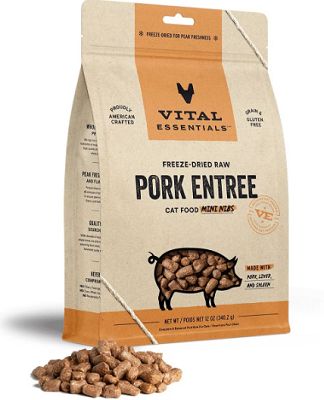
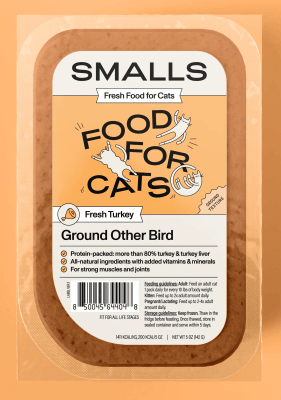

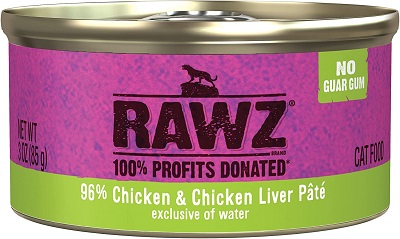


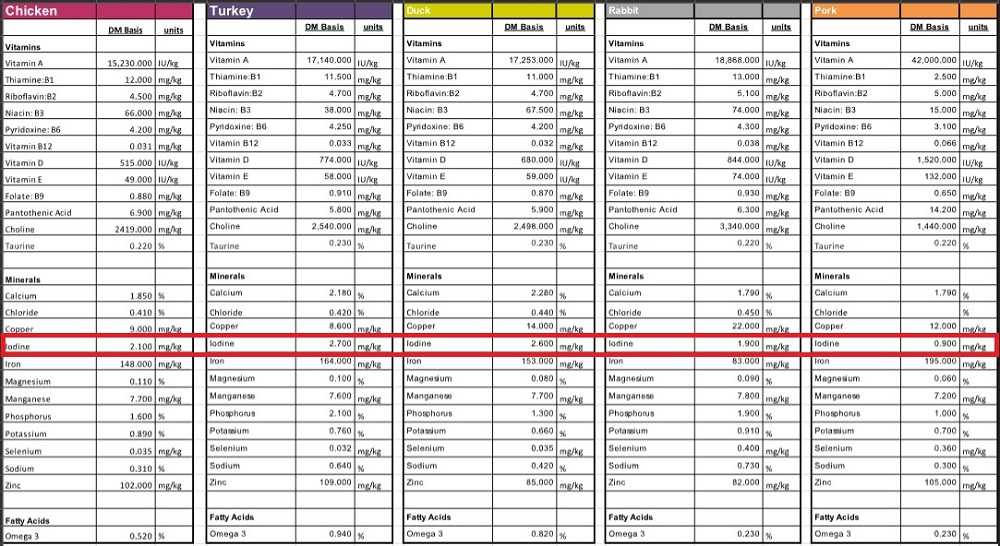




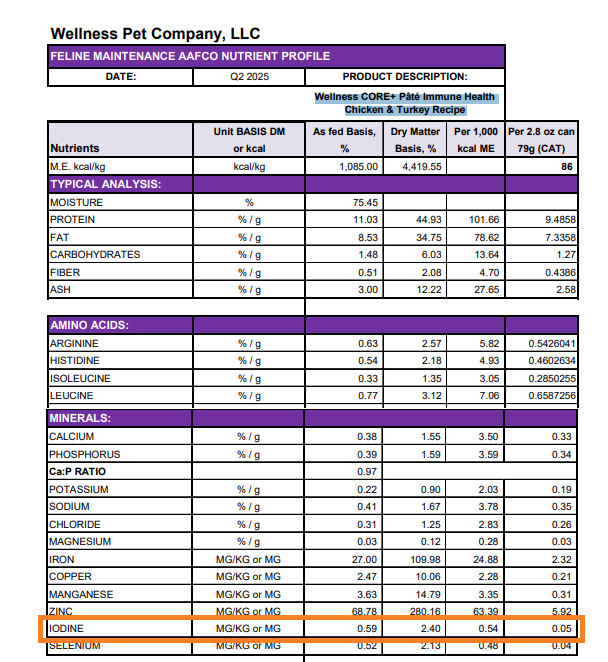
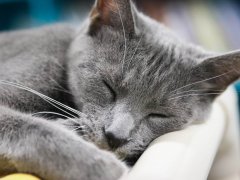


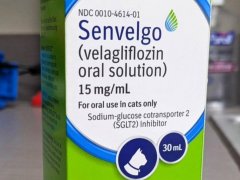
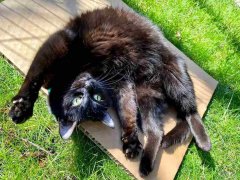


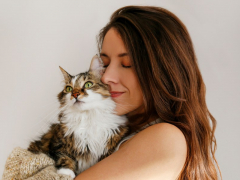
I have been using Hill Thyroid Care wet food for a few months. My cat eats about one can a day, spread over four meals. The food has a tendency to dry out very quickly and it is already very tough. Does anyone have any recommendations for keeping it moist for my kitty?
I don’t understand why Smalls is on this list given that all of their cat food recipes include dried kelp and are over 3.0mg/kg,
I contacted the company to see if all the iodine levels were at 5.4 for their food and they are unfortunately. Even though my cat is on transdermal methimazole, I still want to stay within lower range iodine foods. It’s too bad because otherwise the ingredients are good.
Would love to know of any homemade receipes I could sue for my hyperthyroid cat to make home made less processed food
Great question, Rosemary. Homemade diets are tricky to get right, even for healthy cats. It’s just hard to ensure the right balance of nutrients. I’d recommend running the idea by your vet first to see if they can recommend a recipe.
So, I’m still confused. For the Hill’s Prescription Diet you state that it only has 0.1 ppm of iodine. And the article apparantly can’t tell us what is required iodine-wise. Though some content levels are all given as ppm. All of the other cat foods, iodine content is given by mg/kg — dry matter. So how can we really compare? Or even tell if those iodine levels are indeed low?
Fair question, Cynthia. I found myself getting confused when researching this piece exactly for that reason—some manufacturers state iodine content as ppm and others as mg/kg. As the article states, AAFCO recommends a minimum of 0.6 mg/kg iodine for healthy adult cats but the actual amount of iodine varies greatly from one product to another. Non-prescription products tend to be much higher in iodine than that 0.6 mg/kg minimum, so the article is focused on products that get as close to that number as possible while still adhering to our nutritional philosophy for recommendations.
Scientific research on this subject is limited and many studies focus on identifying iodine levels in cat food rather than determining what the “ideal” level is for cats with hyperthyroidism. Diagnostic testing may be required to determine how much iodine is appropriate for a specific cat with this condition.
Appreciate this article! Very helpful in navigating food selection for our foster cat diagnosed with hyperthyroidsim.
In the future, could you consider making a top 6 recommendations for only wet food for cat with hyperthyroidism? That way readers could have a longer list of wet foods to rotate between in case cat is picky/a food changes formula/etc.?
Is it okay to feed a hyperthyroid cat a wet food that contains some sort of fish oil for omega 3s – whether fish oil, salmon oil, etc. Should some oils be avoided?
Hi Kaylee, that’s an excellent question. From what I understand, high-quality fish oil is not a problem for cats with hyperthyroidism. Look for a top-notch, molecularly distilled product like the fish oil from Nordic Naturals.
Thanks for posting the article for low-iodine cat food. But can you also list the iodine content inside the food as well? I have 14 yrs old cat and followed the article and tried the tiki cat can for less than one month since Hills y/d is out of stock. The blood test didn’t go well. The T4 number went pretty high over 10. After stop the tiki cat can for 2 weeks, we took another blood test. The T4 number is back to normal now (~3.7). And I found the iodine content of tiki can reply on web site Chewy is very high. (pasted below)
“There is 2.896 milligram per kilogram..”
We’re not sure whether our cat is just a single case. But I would suggest to be conservative to recommend the tiki cat can or any other food without list iodine content.
Again, thanks for spending efforts to write the article. Though it didn’t help our cat, I do hope it helps others.
Hello there, I appreciate your comment. Regarding your cat’s situation, I want to be clear that the recommendations given here were never intended to treat hyperthyroidism via iodine control, since, to my understanding, no food other than the Hill’s y/d has low enough iodine levels to control hyperthyroidism. However, I agree that at least some iodine restriction is beneficial, and it may have been irresponsible of us to recommend “any good food” (more or less) rather than looking into iodine levels and recommending diets that were are least somewhat lower in iodine compared to the competition. I’m sorry to have failed your cat with this article, and I’ll make sure that we update it and hopefully do better for cats in the future.
Hi Mallory! I love reading your responses. Could you check out weruva phos focused for me? It’s the only thing my hyper/kidney girl will eat! Thank you!
Heya Kayla, absolutely! I’ve been feeding it to my cat with kidney issues as well and am very excited to have a chance to talk about it soon. Thanks for commenting!
Any one there ever READ the Hill’s thyroid dry food ingredients ???
The PRIMARY ingredient is __CORN__ followed by __CORN GLUTEN___
Any of you ever see a cat run into a corn field, yank off an ear, and start eating it??
Didn’t think so
…and what happened to all those benefits of “grain free” ??
Stop recommending Hill’s “thyroid” “veternarian recommended” JUNK FOOD or your claim of “Our reviews are based on extensive research” is just so much bs !!
I think the article makes it clear that we don’t view this as a nutritionally-ideal diet. It is, however, clinically proven to control the effects of hyperthyroidism, which is the only reason the wet version is listed as the number one recommendation here. Thank you for emphasizing this point. The other recommendations on this list are better reflective of our impressions of a nutritionally-optimal diet for cats who are being treated in other ways.
My male cat has been diagnosed with hyperthyroidism. He is on methimazole. He is very picky about what he eats. He has had diarrhea for a month or so, very runny. He has a very hard time when he goes into liter box. He really strains. I have tried pumpkin. I need ideas on how to firm up his stool.
Hi Georgetta, I would recommend talking with your veterinarian to identify the underlying cause of these digestive issues. Additionally, you might appreciate our recommendations for the best cat food for diarrhea.
I have had cats for about 27 years. Like many of you readers, I historically made the incorrect assumption that if petfood was good enough to be stocked on grocery store shelves that it was safe for my pets. A few years ago I started buying what is supposed to be premium cat food, with the same assumption–that if it was on the shelves, it was safe. and I was paying a hefty price for the premium cat food, so it had to be beter for my cats, right? WRONG!
Withi the last year and a half, I have had several cats suffer and/or die of hyperthyroidism. It was some new trend. The vets at my vet office, both living fewer years than I have a had cats, said it was just common with old age. They were speaking with maybe 5 or 10 years of vet experience, but my 27 years of cat ownership was saying NO. This is a new trend. But WHY? Did some research, and found a whole bunch of adverse data regarding a common pet food ingredient called sodium selenite. Guess when the FDA and te AAFCO started recommending that this ingredient be added to pet food? It was sometime in 2016. Folks–read up on SODIUM SELENITE. IT IS TOXIC. It is in MANY cat foods. Additionally, did you know, that there is a maximum allowable amount of sodium selenite for humans, and a maximum allowable amount of sodium selenite for dogs. BUT NOT A MAXIMUM ALLOWABLE AMOUNT OF SODIUM SELENITE FOR CATS. *****WHY NOT?????!!!
Been buying First Mate canned chicken an turkey, but my cats get sick of it, even if I mix in a little Fussy Cat or other for a different flavor. And the reviews here say that it is just ok for the species appropriate rating due to the pea starch carbs. So far I find it is the least evil solution. Other cat foods have much higher carbs, or a bunch of useless fillers, sodium selenite, or kelp–which another respondent here pointed out has IODINE in it, which is BAD FOR CATS WITH HYPERTHYROIDISM.
GOOD LUCK AND GOOD HEATH TO YOU AND YOUR CATS.
Hi there, thanks for this comment—all of this is extremely interesting. Your insights are much appreciated. – Mallory
Below your words regarding Canned YD.
Because it’s restrictive, not species-appropriate, and isn’t a real cure, think of this diet as a temporary measure or as a last resort for cats who can’t undergo surgery or receive radioiodine.
ME:
WOW are you more interested in pushing a brand of cat food than caring about felines & the people who love them?
Have you ever had a cat that’s had radioactive iodine ?
Are you aware of the many complications and health issues and life-threatening possibilities that come from radioactive iodine ?
Are you aware of the negative side effects that are toxic with the one pharmaceutical drug that’s available to cats for hyperthyroidism ?
You are not aware and I will not educate you here but do not mislead people and put the people’s cats at risk .
Currently why did canned is the safest of the three Alternatives I’ve been around the block and all directions and have definitely looked at the science.
YOUR NEXT COMMENT:
It starves the thyroid of fuel, but it doesn’t slow down the progression of a thyroid tumor. The tumor will continue to grow and potentially change into a carcinoma.
ME: WOW again. To say I’m shocked as an understatement. You’re telling everyone that everyone’s cat is going to end up getting a carcinoma tumor if they eat yd cat food. SHAME ON YOU!
You made a lot of good points and then I got to those two and then the next brand underneath the yd canned has kelp in it do you know kelp is extremely high in iodine and you are recommending that people treat their hyperthyroid cats with that dry cat food.
Kelp is one of the highest iodine Foods there is a cat eats that they’re going to get hyperthyroid again and that’s what’s dangerous do you know what hyperthyroidism does to the body?
Myself I have a thyroid disorder and I’ve had several cats with hyperthyroidism and I know what I’m talking about and I’m not even going to read the rest of your article it’s nonsense I doubt you’ll even express what I’m saying here but you need to go back to the drawing board because you’re putting cats at rest
Hi there, thank you for the thoughtful comment. I’m lining this article up for review by a veterinarian to ensure that all of the statements made here are accurate and in line with the latest veterinary recommendations—it does seem that it’s in need of an update.
I have a 17 year old Norwegian Forest cat who just recently developed hyperthyroidism. I read the following article and thought I’d share it because some of the dietary views differ from your recommended food list while other views are the same. My opinion is that mimicking as closely as possible a cats diet in the wild, taking into account what their bodies were meant to ingest, is the best dietary route. Every dry food will fall short of those requirements including Hills. I hope people find this helpful. I know people get very defensive about their pets and how they care for them. This is info from experts in feline veterinary endocrinology. https://www.google.com/url?sa=t&source=web&rct=j&url=https://www.felinehtc.com/documents/Feeding-Cats-With-Hyperthyroidism-Newsletter-July-2015.pdf&ved=2ahUKEwjhhuCrsc73AhXKATQIHXl0AXsQFnoECC4QAQ&usg=AOvVaw0sH_dp2YhKIiH1IkzU4v3j
I have 5 cats all with health issues. Bella my 13 yr. old was just diagnosed with hyper t & is being treated with the transdermal med. She is skin & bones. The vet has not put her on a special diet yet but my question is can all of my cats eat the Hills hyper t dry food or will it hurt them? All of my cats share a community dry food bowl. Any advice would be appreciated.
Hi Ed, thanks for commenting! We don’t really know how an iodine-restricted diet will affect cats who don’t have hyperthyroidism. If you choose this diet, I would recommend restricting it to Bella only. That’s going to be a challenging transition from the community bowl—a couple of microchip feeders may be the best solution to ensure that the other cats don’t eat Bella’s food and vice versa. Wishing you all the best.
We are going through same as you. 1 older cat with hyper and other 2 just fine. Our vet said a low to zero iodine food is by prescription, so that has be a bad sign for our regular cats to eat it. Just like once your thyroid cat starts special food like science diet thyroid they aren’t supposed to have access to regular food or cat treats. Almost all cat treats have iodine based or added. We actually got with our vet and started making our own food. It was a lot cheaper and healthier. Just boiled chicken, we used thighs, used broth to add for gravy and collegen. Then got prescription powder and minerals that you add to it. Cost was .10 cents per ounce compared to the cheapest thyroid food at almost. 30 cents per ounce going as high as $1.25 per ounce. You can cook it in batches and freeze and thaw as needed. Our cat after 1 month didn’t need the 2x thyroid pills. The pills also cause behavioral issues and can lead to urinary and kidney disease. We’re very happy we switched to home made DIY food and our 15 yr old cat improved. Making his last few years at least enjoyable. Good luck.
I know this is a late reply, but i am hoping you or others will have an opportunity to read it. it is painful to see how the industry (including the care from the vets), have become a business, that promote medication and garbage food like YD by hills. My cat was near death, 12 years old at the time, skinny- omg – skinny weak… I put the cat on the hills diet 1 can a day – but from my pet carnivore and hare-today – ordered raw frozen meat. It worked – my cat put on weight due to the protein, the diarrhea stopped, the howling stopped, my cat started playing again. I watched videos from a vet on how to make the vitamin mixture with raw rabbit (dr. karen becker). I did not give my cat any medication and slowly weaned him off the hills food – using as an emergency when going out. I have created frozen cubes and made a mini cooler food dish, so he can eat when needed while im out for several hours). the thing about the raw meat – is it forces the cat to use the excess energy they produce in the digestion of the raw meat – given in small amounts an oz or 2 oz every few hours – after a few weeks he was back to normal – 2 years in he is doing great – his brother was just diagnosed (he has a small amount of medication – his number was 18.2 – way over home treatment until i can get it under control). the biggest and most important thing – follow the recipe – the doctor gives it for free – i made a mistake once (for the brother just diagnosed) – and had a b1 deficiency that had him having mini seizures – but you can use hills – with raw wet food – that cat will gain weight – wont need medication – you have to do this slowly with your vet – many are against this – but it is a lot of work and commitment – but it does work. Good luck to all.
Hi, I recently started feeding my hyperthyroid cat Smalls cat food. Human grade, few ingredients. It doesn’t list iodine as an ingredient… are there other names for iodine? I don’t think they carry any fish varieties. It isn’t in cans and must be kept refrigerated or frozen.have you evaluated this brand?
Hi Valerie! That’s an excellent question. Smalls cat food doesn’t list iodine on their nutrient labels, but this mineral is found in many foods, including meats (not just fish). Unfortunately, I don’t have those iodine values on hand, but you can contact Smalls for more information: [email protected]
If you’d like to learn more about Smalls, you can read our complete review of the brand here.
Hello Valerie,
Kelp is high in iodine, and is a common ingredient many catfoods that are advertiised as ‘healthy’.
#### ANOTHER INGREDIENT THAT YOU WANT TO AVOID FOR HYPERTHYROID CATS IS SODIUM SELENITE.
Several of the above recommendations contain sodium selenite. NOTE that CARA TURKEY STEW formula contains selenium yeast, which is considered a much safer form of selenium. (And I will look into buying some for my hyperT cat.) For some reason, the other Cara formulas contain sodium selenite.
#### Please read this before allowing your hyperthyroid cat consume cat food with sodium selenite:
Below is some information that I found on sodium selenite:
–It may be toxic to blood, kidneys, liver, skin, central nervous https://link.edgepilot.com/s/25a70671/g7iqR56DaE_3LtPg8wQJYw?u=https://www.essentialstuff.org/2018/02/04/cat/beware-sodium-selenite-in-pet-food-is-toxic-2/
*******
–2.94 times more toxic than Selenium Yeast https://link.edgepilot.com/s/2dca0350/6DXAoUTsj0i7hLox8zuiHg?u=https://truthaboutpetfood.com/truthaboutpetfood.com
*******
–There is no provision in the federal code that states explicitly that sodium selenite is allowed in dog or cat diets https://link.edgepilot.com/s/1045f2c0/kyP3WAVSIE2A7KYy7USMVw?u=https://www.petfoodindustry.com/petfoodindustry.com
*******
–Is Selenium Toxicity a Concern for Our Pets?
https://link.edgepilot.com/s/a310e71b/gI4k8ebnNEW-pZWFPgFmSw?u=https://truthaboutpetfood.com/is-selenium-toxicity-a-concern-for-our-pets/
Is raw selenite safe for cats?
-Damage to the liver and spleen in animals has also been observed, according to The National Institute for Occupational Safety and Health (NIOSH). According to the 1986 edition of the Handbook of the Toxicology of Metals, daily intake of about one milligram of selenium as selenite can be toxic.Aug 24, 2011
-The EPA (reminder: the EPA sets NOAEL – No Observed Adverse Effect Level – based on very detailed reviews of numerous studies) determined the highest allowable daily intake of selenium (for a 121 pound human, but based on animal studies) to be 0.853 milligrams per day.
-The American Association of Feed Control Officials (AAFCO) has determined an adult maintenance dog food can have a maximum of 0.57 milligrams per day (based on recommended daily calorie intake, not body weight);
-AAFCO has no maximum level of selenium established for cat food within their pet food regulations.
*******
–Beware: Sodium selenite in pet food is toxic
https://link.edgepilot.com/s/e1caea17/QKC8Osym_kSdSinS4loHYA?u=https://www.catsfork.com/CatsKitchen/beware-sodium-selenite-in-pet-food-is-toxic/
…as counter-intuitive as this sounds, it is a truth: the smaller the concentration of toxic selenium, the greater the harm because small concentrations mimic hormones, especially estrogen.
*******
–Role of Selenium in Pets Health and Nutrition: A Review
https://link.edgepilot.com/s/9585e971/wrrxyjTSWkOPxcAEUj7Uig?u=https://scialert.net/fulltext/?doi=ajas.2011.64.70
Research (Fan and Kizer, 1990; Olson, 1986) proved that inorganic selenium sources can be toxic in high doses; affecting an animal’s blood, liver and muscles. Inorganic selenium cannot be fully metabolized or stored in the body. Consequently, selenium deficiencies still arise in animals that are supplemented with inorganic selenium (Lopez et al., 1969).
Selenium concentrations in pet foods is highly variable.
However because inorganic selenium cannot be stored in the body, organic forms of selenium are being increasingly used as they are safer and more efficiently used in the body.
CONCLUSIONS
The role of trace mineral selenium in animals particularly pets is discussed and reviewed. Selenium deficiency is found to be one of the key factor behind many diseases like Kashin beck disease, cardiomyopathy, etc., Selenium levels and its forms in the diets play an important role in managing the trace mineral level in the body of the pet animal. However, toxicity associated with the high dose of selenium makes it vulnerable to pets and other animals due to the narrow difference between its required dose and the toxic dose. Current selenium supplements are mainly dependent on inorganic sources like sodium selenite which are found to be less bioavailable and also toxic. However, relative uses of selenium and its forms would be dependent on its nature of application and end use requirement. Keeping safety of the pet animals and environment as main focus areas, organoselenium compounds would be a good and alternate prospective choices for research scientists working in pet animal nutrition.
*******
–[###### This announcement below indicates the likely timeframe when other pet food companies started adding sodium selenite to cat food. This makes sense to me in that before this timeframe none of my cats–even aging ones–were having any hyperthyroidism issues.######]
ADDITIONAL INGREDIENT ADDED TO OUR HUMAN GRADE PET FOODS
[The Honest Kitchen] August 14, 2016
https://link.edgepilot.com/s/c74f3810/A4SZ83i8b0iE7SOnvItnIw?u=https://www.thehonestkitchen.com/blog/new-addition-vitamin-premix
*******
Equipped with the above info, I now ensure that my cat food does not contain sodium selenite.
I also had a cat that had CKD, and CKD can often be a secondary condition to hyperthyroidism, so I also stay away from foods with high phosphorous levels.
And while the Hill’s PRESCRIPTION food for hyperT is not available, Hill’s Science Diet has a number of entrees that DO NOT contain sodium selenite, AND the phosphorous levels ar not that high. Here are two that I buy: HSD Adult Healthy Cuisine Roasted Chicken and Rice Medley, HSD Adult 7+ Savory Turkey Entree.
I also buy Instinct Freeze-dried Raw Meals Grain-free Cage-free chicken recipe, Vital Essentials Vital Cat Freeze-dried Beef & Chicken Mini Nibs, Fussie Cat Super Premium Chicien with Sweet Potato Formula in Gravy, Fussy Cat Super Premium Chicken & Vegetables Formula in Gravy.
Hope this helps.
vet just told me the options diet, med, radio?// something and surgery. surgery being best option we just don’t have that kind of money we are up in early 70’s we know all will be costly but will surgery leave her a healthy life no more problems or will she end up in pain and he said there is a small chance the other one ma become enlarged and have to do it again. My question she is a senior and I do have 4 other cats I would be willing to buy the special food and feed it to all of them to keep her from getting any regular food but is there any thing I can fix for her in my kitchen with out salt and stuff lets say chicken beef or lamb not so sure about pork but no fish that would help her to gain some of her muscle mass she has lost quit a bit. I’m torn my husband would agree with surgery if her life will be a good one if not he says no. any suggestions on the home food in addition to the y-d food please she is my baby. They are the babies of the last strays we took in we fixed them all and eventually the adults left and found new homes. range in age Toppy the one that is in question and Jill 10yrs, Winky 9yrs and Ida Mae 8yrs except Raven my sons cat 19yrs any pointers you can give to avoid the alternative.
Hi Sammie, thank you for commenting. You’ve brought up some good questions. It is true that surgery or administering radioactive iodine therapy (which has a 95%+ success rate) are preferable to long-term medication or reliance on the y/d diet. If you can afford the injection, I would recommend this as your number one option. As for homemade food, that’s very tricky. I imagine that it should be possible, but I don’t have any specific suggestions. Please reach out to the All About Cats community with this question, as we have a team of vets at the ready to give you some insights.
My 12 year old is hyperthyroid. I’m going for the radioactive treatment after lots of research. Consider the following suggestions:
1. Get a second opinion. Have a copy of the lab bloodwork report sent to another vet and meet with them to review. The more you learn about this disease the better. It also helps in your decision making.
2. Compare the cost and stress of the life long meds and vet bills for regular bloodwork and vet appointments to adjust dosage if necessary.
3. Many vets have a payment plan to help with costs.
4. Be sure that there are no other underlying conditions such as kidney disease before making a costly decision.
Hi Sammie,
I’m so sorry to hear about your cat. I’m not a vet, but do have some experience in what you are going through. Human table salt would be the biggest concern for Hyper-t pets, as our table salt is infused with iodine. Not that high-sodium diets are good for cats, but the salt in their food is usually not iodine-salt. I have a pair of adopted cats, they are currently 15 years old. My boy cat was diagnosed with Hyper-T around 5 years ago. After an abundance of research, I wanted to do the radioactive iodine-131 (131I) therapy & found a pet clinic that did it in St. Louis, MO & that time the treatment cost around $700. However, your cat’s heart and kidneys need to be in good shape, as Hyper-T masks kidney decline/disease you may not know how his kidneys are until you have his thyroid levels back in range (through meds). So, our vet put him on anti-thyroid meds. After 30 days, we took him in for blood work and while his Thyroid levels were back in the normal range, she mentioned that she did see *some* decline in renal function. As he was 12, she suggested we stay on the meds, but could certainly ask the 131I clinic if they thought he was a good candidate. After all the distress this had caused, I elected to remain on the meds. I will say now, I highly regret that decision. The radioactive iodine treatment is typically 1 shot of radioactive iodine which goes into the system, directly targets the thyroid tumor tissue and it, along with the treatment is excreted. Your cat would have to stay in the clinic until they are no longer secreting the radioactive iodine, which could take anywhere from a few days to a week. If done in 1 does (95% success rate at 1 dose), they should no longer be hyperthyroid. Leaving him on meds means I have to pill him every 12 hours, and he needs regular blood tests (every 3-6 months) as the thyroid tumor continues to grow, so the dosage goes up over time. I won’t get too detailed here as any treatment is better than none, but the medicine comes with it’s own set of problems. If you vet is suggesting surgery, your cat likely has a healthy heart & kidneys, and is likely healthy enough to go through the iodine treatment. It’s non-invasive as it’s just a shot, and after a little bit of time in the kennel to excrete the radioactivity, they are usually 100% cured. Anyway you go, I highly recommend removing fish from his diet completely, as current science- while not identified as the cause for sure- indicates a likelihood that the high metal levels in fish could be the cause. I can say, with no doubt, fish treats absolutely throw him out if whack. He won’t even touch food that has fish in it now, which was his favorite (from my dinner plate that is). Also, my girl cat (his 15 yr. old sister) never cared for (my) fish, but otherwise had the exact same diet & environment, but she does not have hyper-t. A diet that is high, animal-based protein is NEEDED for seniors, especially so with Hyper-T, as it’s basically like having your engine revving at 100mph all day long. This is a fatal disease without treatment, so please make sure your choice of care is something you & Toppy can both manage. All treatment options have pro’s and cons, so please make sure your vet is willing to discuss the full pro’s & con’s of each treatment and is weighing them against your cats overall health. Best of luck!
My cat is hyperthyroid. He has been eating the y/d formula for abut 6 months but now has had it. Just won’t eat it. In an effort to get him to eat something, anything I tried wet Rachel Ray cat food. He gobbled it down. Now I am stuck between something which he will actually eat (but has possible cancer causing agents and the food he won’t eat that is good for him.
Wondering what to do He is under a vet’s care, but at this point, I know more than the vet.
Hi Marita, apologies for the late reply! Have you been advised against other treatment routes? Hills y/d will not work if fed along with another diet, but at this time, it sounds like getting him to eat something supercedes the need to give him this therapeutic diet. I would consult with your vet on the alternatives like radiation or medication.
Vets today do not attend nutrition classes, just lecturers. Lecturers are NOT professors. Anyone who’s been in college knows what lecturer halls are vs. class rooms. Vet colleges use lecturers from HILL’S AND PURINA. Propaganda? You bet. Hill’s and Purina both pay vets who sell their products, called “kick backs.” Same with various vaccines, meds, etc. Use OUR products and we will pay you. A lot. Most vets today can’t spell “nutrition” let alone tell you what’s best for your animal. You will have to go to the UK or Europe for that today. Vets don’t make any revenue by keeping your pet HEALTHY. They make money on SICK animals. Same with human doctors today in the US. Learn as much as you can about pet foods, lists of ingredients, and what works best for your little buddy. The FIRST priority is to give them what the LIKE to eat and worry about what’s better for them to eat. You can always add quality supplements that they NEED to have in their favorite food. Trust me, they will love you for it and they will be fine. Get IDEXX CBC/chem panels/Total T4 results at least every 60 days. Keep the PDF results at home. Follow the test results and go from there. You will end up knowing more than your bet.
Been there, done that.
Garry
Nature’s Variety Original Grain-Free Real Lamb Recipe Canned Cat Food contains salt, should I worry about it?
Hi there. Many cat foods do contain salt and appropriate iodine levels are not well-established, so it’s very hard to say whether or not the lamb recipe from Nature’s Variety Instinct is an acceptable choice for cats with hyperthyroidism. This is an issue best discussed with a veterinarian.
I started my cat on medicine for hyperthyroidism today. How long does it usually take to start reducing symptoms? Also my cat seems to always be hungry but when I put food down he hardly touches it. Is that ever a symptom of hyperthyroidism?
Hello Laura, I believe you’ll find answers in our veterinarian-written article on hyperthyroidism: https://cats.com/hyperthyroidism-in-cats
I’d also recommend discussing these questions with your veterinarian.
My cat is only 12 but a geriatric blood panel has indicated hyperthyroidism. She does the same. Wants food but eats only a little and ignores the rest. You should talk to your vet. My cat is waiting for the iodine radioactive treatment. In the interim I have been trying all the recommended brands for hyperthyroidism. Her previous food was almost all tuna – a big mistake I’m told. Now when I feed her I only give the small amount but feed her many throughout the day. Seems to get her to eat more.
I have hyPOthyroidism. I take a prescription called “Nature-Throid.” What is the main ingredient? LIVER!!! Apparently this helps my under-active thyroid.
Although I am not a cat, it would seem that for hypERthyroidism, liver should be contraindicated! Yet the Hill’s Prescription food you suggest has its SECOND ingredient as liver. AND the FIRST ingredient is WATER. For pity’s sake, I can put water in their food. I don’t need to be paying though the nose for food with water as it’s most prominent ingredient!
Seriously, it is like its all about money for the pet food companies, and not about the animals themselves.
This is correct. Liver is just as bad as Kelp. Both add iodine, which causes your thyroid to put out MORE hormones.
Great point!
Great article. I have a question. We have a 17 year old cat with hyperthyroidism, and he has been having Hills Y/D for 2 years. It has improved his T4 count, but he is steadily loosing weight over time – possible due to age. Are you aware of any recommend suppliments we could give him along with the Y/D that may help increase his weight?
Hello David,
Thanks for commenting.
I contacted Hill’s and asked them about your situation and, unfortunately, wasn’t able to get much help there. As you know, it’s recommended that you feed the y/d diet as your cat’s only food source. Given that the diet relies on keeping iodine intake extremely low, most supplements seem to be out of the question.
All in all, it’s probably a good time to see a vet. They can help you to determine exactly what is causing your cat’s weight loss and which type of diet will best address those underlying issues. While you’re with a vet, I’d also consider asking about vitamin B12 shots. These can help to increase your cat’s appetite and give him an overall health boost without increasing his iodine intake.
I hope you get more answers soon and are able to find a diet or supplements that fit your cat’s needs.
Best,
Mallory
Appreciate this article so much! Thanks!
Would love if you can email me to chat, I have some questions after reading this.
Hi Joe,
Glad you liked the article!
Do feel free to shot us an email at [email protected]
Meow,
Pedro
Hi Mallory, what about the Rawz cat food? Could this also help with hyperthyroidism? Thanks, James
Hi James, well, none of these foods will really help or treat hyperthyroidism, but it seems to me that Rawz would be as good a choice as any of the others on this list; and because it’s free of any seaweed-derived ingredients and many varieties are fish-free, its iodine levels should be moderate-to-low as well.
Since Hill’s Y/d canned cat has been out of stock for some time everywhere and Hill’s has no expected production date due to supply chain lack of some of the ingredients, what do we do? Sad they have a monopoly on this necessary pet food and haven’t been able to supply it.
It really is a rough situation, but I’m afraid I can’t give you anything more than what is covered in this article already—none of these other foods can really control hyperthyroidism, but simply trying a low-iodine food and considering other treatments like medication and radioiodine therapy can help.
The Wellness pate contains potassium iodide.